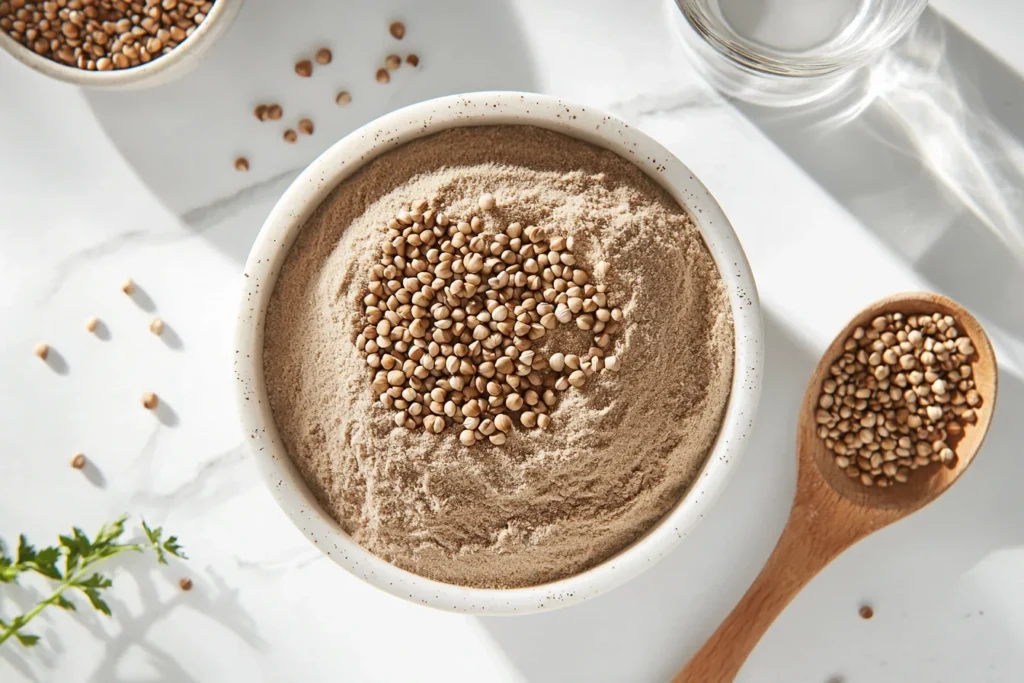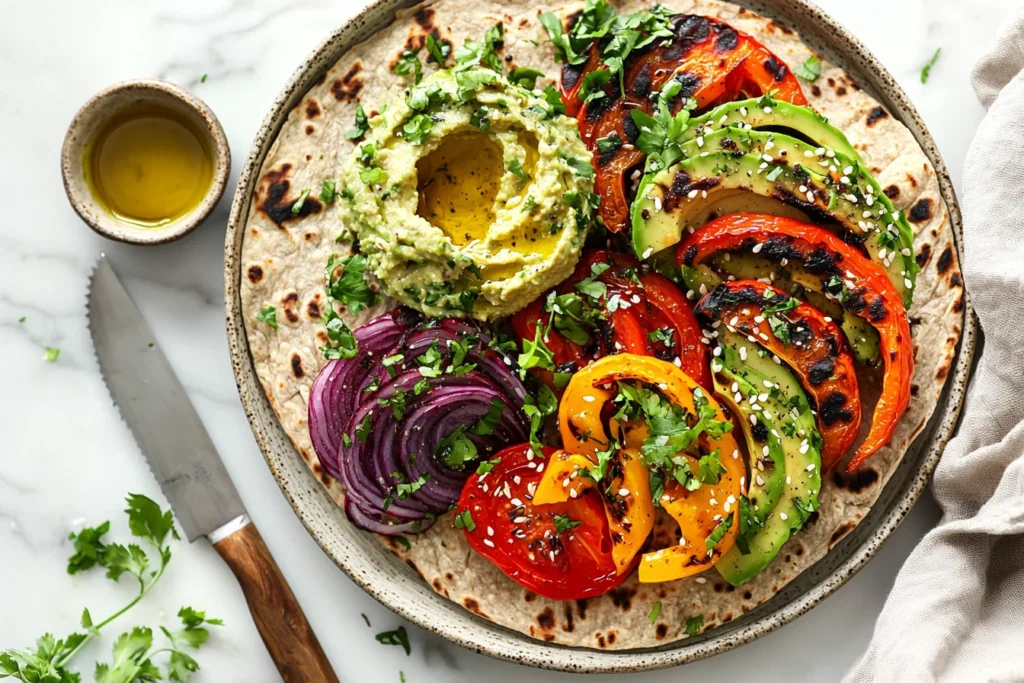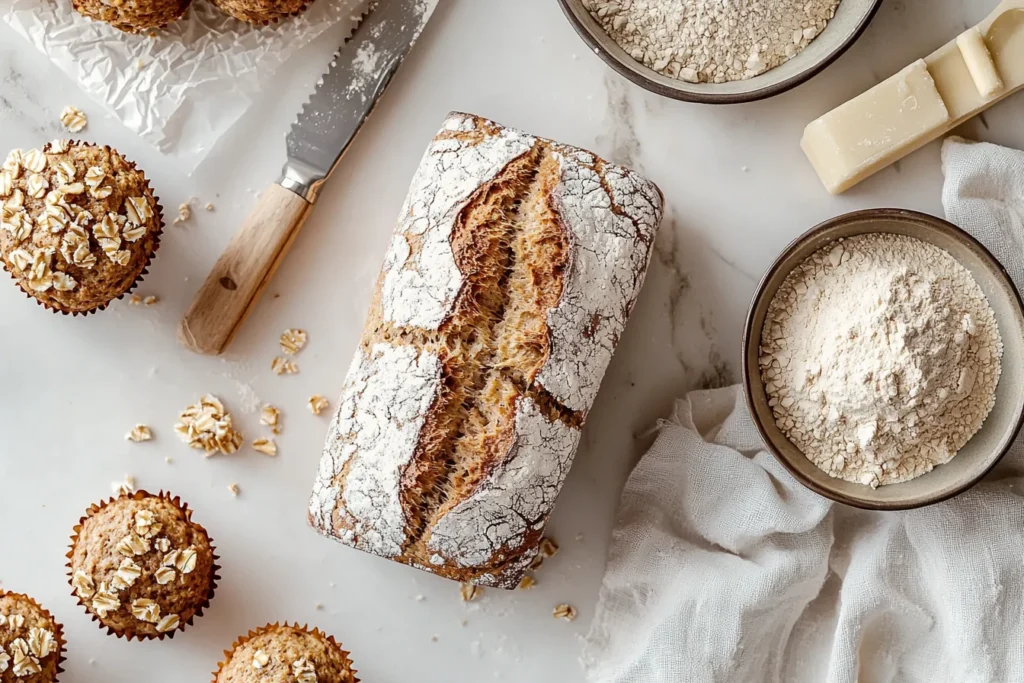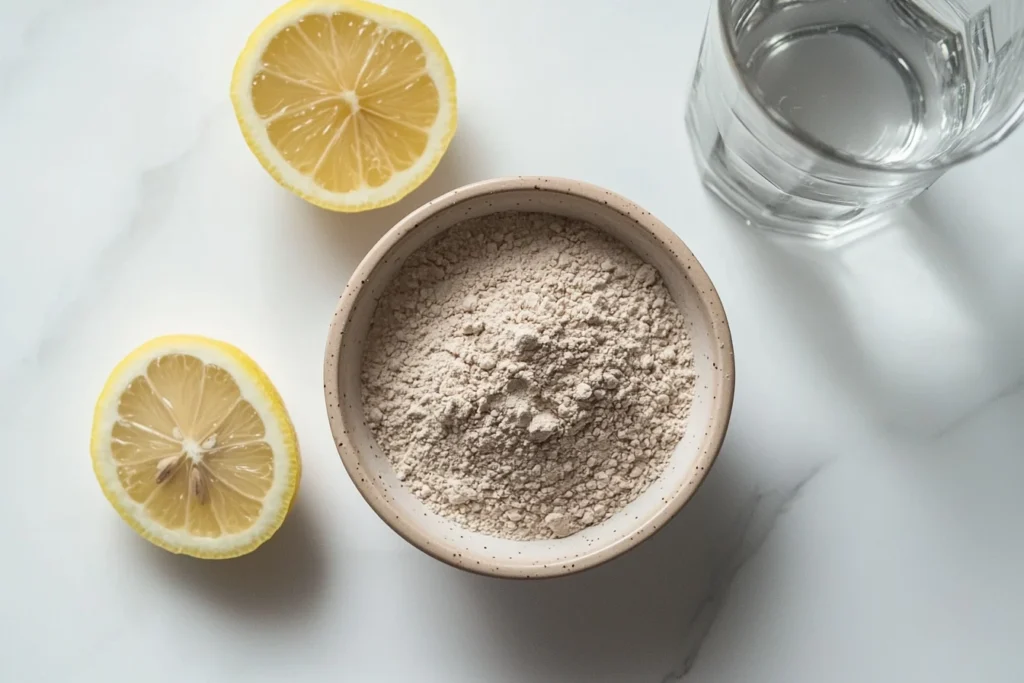Ever wondered why your buckwheat-based recipes don’t turn out as light or easy to digest as you’d like? Why soak buckwheat flour? The answer might surprise you! Soaking buckwheat flour is a simple, game-changing step that can make your cooking easier and your meals tastier.
First, soaking helps your recipes shine by improving texture and flavor. Next, it boosts the health benefits of buckwheat, making it gentler on your stomach and easier to digest. You’ll also love how soaking brings out the natural goodness of this flour, making your pancakes fluffier and your bread irresistibly tender.
Ready to transform your buckwheat creations? Keep reading to learn how soaking can turn ordinary dishes into something extraordinary. It’s simple, fun, and totally worth trying. You’re going to love how easy it is to make soaking a part of your routine!
Table of Contents
Unlocking the Nutritional Potential of Soaked Buckwheat Flour
How Soaking Enhances Nutrient Absorption
Why soak buckwheat flour? Soaking is the key to unlocking its full nutritional benefits. First, soaking activates enzymes that break down phytic acid, an antinutrient that blocks nutrient absorption. This process makes essential minerals like iron and magnesium more accessible for your body.

It’s a simple way to maximize the nutritional value of your meals. To understand the broader nutritional benefits of whole grains, consider the vital role grains like buckwheat play in a healthy diet.
Additionally, soaking improves the bioavailability of vitamins and minerals, making every bite more nourishing. This step benefits anyone seeking healthier recipes, from pancakes to muffins. Soaked flour also tastes fresher and lighter, enhancing both flavor and texture.
Finally, the soaking process supports digestion. With nutrients unlocked and antinutrients reduced, soaked buckwheat flour becomes gentler on your stomach. You’ll love how this step transforms your recipes into healthier and more delicious creations. Try soaking today to make the most of your buckwheat flour!
Reducing Antinutrients for Improved Digestion
Why soak buckwheat flour? Soaking is essential for better digestion and flavor. First, soaking breaks down tannins and phytic acid, natural compounds that can interfere with nutrient absorption. This makes soaked buckwheat flour easier on your stomach and more beneficial for your body.
Next, soaking activates enzymes that further neutralize antinutrients, enhancing the flour’s nutritional value. These enzymes also work to improve the texture of recipes, making your baked goods lighter and fluffier. It’s a small step that delivers big results, especially for those with sensitive stomachs.
In addition, soaking removes the bitter undertones often associated with buckwheat, leaving you with a milder, more pleasant flavor. Whether you’re making savory flatbreads or sweet pancakes, soaked flour elevates every dish.

For creative ideas, explore these savory buckwheat cakes recipes to get inspired. Start soaking today, and experience how this simple process improves digestion, nutrition, and taste.
How Soaking Buckwheat Flour Improves Texture in Baking
Creating Lighter, Fluffier Baked Goods
Soaking buckwheat flour is a game-changer for achieving light, fluffy textures in your baked goods. First, soaking helps soften the flour’s natural density, making it easier to mix with other ingredients. This simple step ensures a smoother batter and creates a softer crumb in cakes, muffins, and pancakes.
Next, soaking improves the flour’s hydration, which enhances its ability to bind with liquids during baking. This means your bread rises better, and your pancakes turn out airy and delicious. It’s especially helpful in gluten-free recipes, where texture can sometimes be a challenge.
Also, soaking allows the natural starches in buckwheat to break down slightly, further improving texture. You’ll love how effortlessly this process transforms your baked goods from dense to delightful. If you’re curious, learn more about can you use buckwheat flour for cakes to expand your baking possibilities. Try it for yourself and experience the difference soaking can make in every bite!
Why Soaking Works for Gluten-Free Recipes
Why soak buckwheat flour? Soaking is a must for successful gluten-free baking. First, it helps mimic the elasticity that gluten provides, improving structure and texture in baked goods. This ensures your gluten-free bread and muffins hold together perfectly.
Additionally, soaking improves hydration, making batters easier to spread and handle. It also enhances moisture retention, preventing dryness—a common issue in gluten-free recipes. Your pancakes, cookies, and cakes will turn out tender and delicious.
Soaking also neutralizes buckwheat’s bold flavor, resulting in a milder, more versatile taste. Whether you’re baking sweet or savory dishes, soaked flour blends beautifully with other ingredients. If you’re looking for complementary flours, check out what flour to mix with buckwheat flour for gluten-free success. It’s a simple technique that guarantees amazing results. Try soaking your buckwheat flour, and enjoy gluten-free recipes that are as satisfying as traditional ones.

The Science Behind Soaking Buckwheat Flour
Breaking Down Complex Starches for Easier Digestion
When you soak buckwheat flour, something amazing happens—it starts breaking down the complex starches naturally present in the grain. First, soaking activates enzymes that transform these starches into simpler, more digestible forms. This means your body has to work less to break down food, which can reduce bloating and discomfort.
Next, this process improves the texture of your recipes, making them softer and easier to chew. Whether you’re making pancakes or bread, the final product will feel lighter on your stomach and your plate. Plus, simpler starches allow the natural sweetness of buckwheat to shine through, enhancing its flavor profile.
Finally, soaking isn’t just for digestion—it also enhances nutrient absorption. With fewer complex starches, your body can focus on absorbing the good stuff like vitamins and minerals. Try this simple step and enjoy food that’s both delicious and easy to digest!
The Role of Enzymes in the Soaking Process
Enzymes play a crucial role in transforming buckwheat flour during the soaking process. First, soaking activates natural enzymes like amylase, which work to break down starches into sugars. These sugars not only improve digestion but also add a subtle sweetness to your recipes.
Additionally, enzymes help neutralize antinutrients like phytic acid, making essential minerals more available for your body to absorb. This means soaking isn’t just about flavor—it’s about unlocking the full nutritional potential of your buckwheat flour.
Also, the enzymatic activity improves the flour’s overall texture, ensuring smoother batters and doughs. Whether you’re making muffins or flatbreads, the difference in texture is immediately noticeable. By letting enzymes do their work, you’ll get better results in both taste and nutrition. Start soaking and enjoy the benefits of this natural process today!
Practical Steps for Soaking Buckwheat Flour at Home
Simple Soaking Methods You Can Follow
Soaking buckwheat flour is easier than you might think, and it only takes a few simple steps. First, measure the amount of buckwheat flour your recipe requires, then place it in a bowl. Add enough water to cover the flour completely, and give it a gentle stir to ensure there are no dry clumps.
Next, let the mixture sit at room temperature for about 12–24 hours. This allows the soaking process to work its magic by activating enzymes and breaking down antinutrients. For added flavor, you can mix in a tablespoon of apple cider vinegar or lemon juice.

These acidic additions speed up the process and enhance the nutrient absorption.
Once the soaking is complete, drain any excess water, and your flour is ready to use. It’s that simple! Try it with your next recipe, and see the difference soaking makes in taste and texture.
How Long Should You Soak Buckwheat Flour?
Knowing how long to soak buckwheat flour is key to achieving the best results. First, if you’re short on time, soaking for just a few hours can still offer some benefits. However, for maximum nutrient absorption and improved texture, aim for at least 12 hours. This timeframe allows the enzymes to fully activate and break down unwanted compounds.
Next, consider the temperature of your soaking environment. Warmer rooms may speed up the process, while cooler conditions might require more time. You’ll also want to stir the mixture occasionally to ensure all the flour is evenly soaked.
Finally, if you’re planning ahead, an overnight soak is a convenient option. This ensures your flour is ready to use by morning without any extra effort. By keeping these tips in mind, you’ll get perfectly soaked buckwheat flour every time, enhancing both your recipes and your digestion.
The Benefits of Soaking Buckwheat Flour for Specific Diets
Why It’s Ideal for Vegan and Plant-Based Cooking
Soaking buckwheat flour is a fantastic choice for those following vegan and plant-based diets. First, the soaking process enhances the flour’s natural properties, making it easier to work with in recipes like pancakes, flatbreads, and muffins. This is particularly important for plant-based recipes that often rely on alternative binding methods.
Next, soaking boosts the availability of essential nutrients like iron, magnesium, and B vitamins. These are critical for a balanced vegan diet and help ensure that every meal is as nutritious as it is delicious. Additionally, the improved digestibility of soaked flour makes it more comfortable for everyone to enjoy.
Finally, soaking fits seamlessly into the plant-based lifestyle. It’s an easy, sustainable step that minimizes waste and maximizes flavor. Add it to your routine and experience how it elevates your vegan baking game.
Enhancing Digestibility for Sensitive Stomachs
If you have a sensitive stomach, soaking buckwheat flour is a must-try. First, soaking neutralizes antinutrients like phytic acid, which can cause bloating or discomfort for some individuals. By reducing these compounds, soaked flour becomes gentler on digestion, making it suitable for those with dietary sensitivities.
Next, soaking activates natural enzymes in the flour. These enzymes help break down complex starches into simpler forms, making the flour easier for your body to process. This can be especially beneficial for people with gluten sensitivities or other digestive concerns.
You’ll also appreciate how soaked flour creates lighter, fluffier baked goods that are easier to enjoy. Whether you’re preparing a savory flatbread or a sweet treat, soaking ensures a smooth and comfortable eating experience. Try it today and feel the difference in your digestion!
Common Myths and Misconceptions About Soaking Buckwheat Flour
Does Soaking Change the Taste of Buckwheat Flour?
Many people worry that soaking buckwheat flour might alter its taste, but this isn’t the case. First, soaking actually softens the naturally earthy flavor of buckwheat, making it milder and more versatile for a variety of recipes. This can enhance the appeal of baked goods, especially for those who find buckwheat’s taste too strong or overpowering.
Next, soaking can improve the overall texture of recipes, which complements the flavor. The result is a smoother, more balanced taste that blends well with other ingredients, enhancing the final product. Also, because soaking reduces certain compounds, it eliminates any potential bitter undertones, which some might find unpleasant.
Finally, soaking helps retain the natural nutty flavor that makes buckwheat so unique and appealing. So, you can confidently soak your flour without worrying about losing its character. Give it a try and taste the subtle improvement yourself today!
Debunking the Idea That Soaking Is Unnecessary
Some believe that soaking buckwheat flour is an unnecessary step, but this couldn’t be further from the truth. First, soaking unlocks a range of benefits that improve both the nutritional value and the usability of the flour, making recipes healthier. Without soaking, you miss out on these incredible advantages that make a big difference.
Next, soaking reduces antinutrients that can interfere with digestion and nutrient absorption. Skipping this step means your recipes might not be as gentle on the stomach or as nutrient-rich as they could be, especially for sensitive eaters. Additionally, soaking ensures better texture and consistency in your baked goods, which everyone loves.
Finally, soaking doesn’t require much effort or time, making it an easy and worthwhile addition to your routine. Once you try it, you’ll see the difference it makes in both taste and texture of your meals. Don’t skip this game-changing step—it’s well worth it and super simple!
Frequently Asked Questions (FAQs)
Why does buckwheat need to be soaked?
Buckwheat needs soaking to unlock its full potential. First, soaking removes antinutrients like phytic acid, which can block nutrient absorption. This process makes the nutrients in buckwheat easier for your body to use. Next, soaking softens the grains, making them perfect for cooking or baking.
You’ll also find that soaked buckwheat is gentler on the stomach. It reduces compounds that sometimes cause bloating or discomfort. Soaking is an easy step with big benefits for both flavor and nutrition. Why not give it a try today and taste the difference for yourself?
Does buckwheat flour need to be soaked?
Yes, soaking buckwheat flour is a great idea for better results. First, it helps improve digestion by reducing antinutrients like phytic acid. This step makes the nutrients more available and easier for your body to absorb.
Next, soaking also enhances the texture of recipes, giving you softer and fluffier baked goods. It’s especially helpful for gluten-free baking, where texture can sometimes be tricky. Soaking is simple and worth the effort for healthier and tastier dishes. Try soaking your buckwheat flour next time, and you’ll notice the difference!
Does buckwheat need soaking before cooking?
Yes, soaking buckwheat before cooking is highly recommended. First, soaking softens the grains, making them cook faster and more evenly. It also helps to remove any natural bitterness, giving the buckwheat a cleaner and more appealing flavor.
Next, soaking reduces antinutrients like phytic acid, which can block nutrient absorption. This makes the cooked buckwheat easier to digest and healthier overall. It’s a simple step that doesn’t take much time but makes a big difference in your meals. Give it a try and enjoy lighter, fluffier, and tastier buckwheat!
How long to soak buckwheat to remove phytic acid?
Soaking buckwheat for 6–8 hours is the best way to reduce phytic acid. First, this amount of time allows the antinutrients to break down effectively, making the buckwheat easier to digest. Next, it softens the grains, ensuring they cook more quickly and evenly.
If you’re short on time, soaking for at least 2 hours can still make a difference, but longer soaking yields better results. After soaking, rinse the buckwheat thoroughly to remove any residue. This simple step ensures your buckwheat is nutrient-rich, gentle on the stomach, and perfect for your favorite recipes.
Embrace the Benefits of Soaking Buckwheat Flour Today!
Soaking buckwheat flour is a simple step that delivers big rewards. First, it makes your recipes lighter, fluffier, and easier to digest. Also, soaking breaks down antinutrients, unlocking nutrients that your body can absorb more easily. You’ll love how it improves both texture and flavor without adding extra effort.
Next, soaking is quick and beginner-friendly. It fits seamlessly into your routine and works for sweet and savory recipes alike. Then, whether you’re making pancakes, bread, or cookies, this method guarantees better results. Plus, it’s perfect for those with sensitive stomachs or dietary needs.
Finally, soaking is a small change with a big impact. Your meals will taste better, and they’ll feel better too. Why not try it today and see the difference for yourself? You’ve got this! Share your favorite soaked buckwheat recipes in the comments and inspire others to give it a go!

